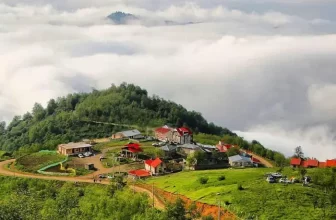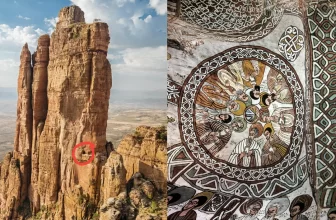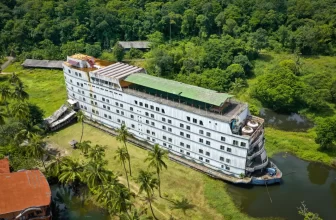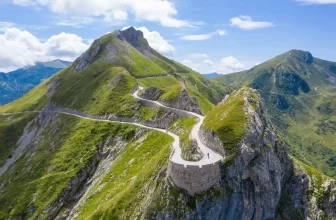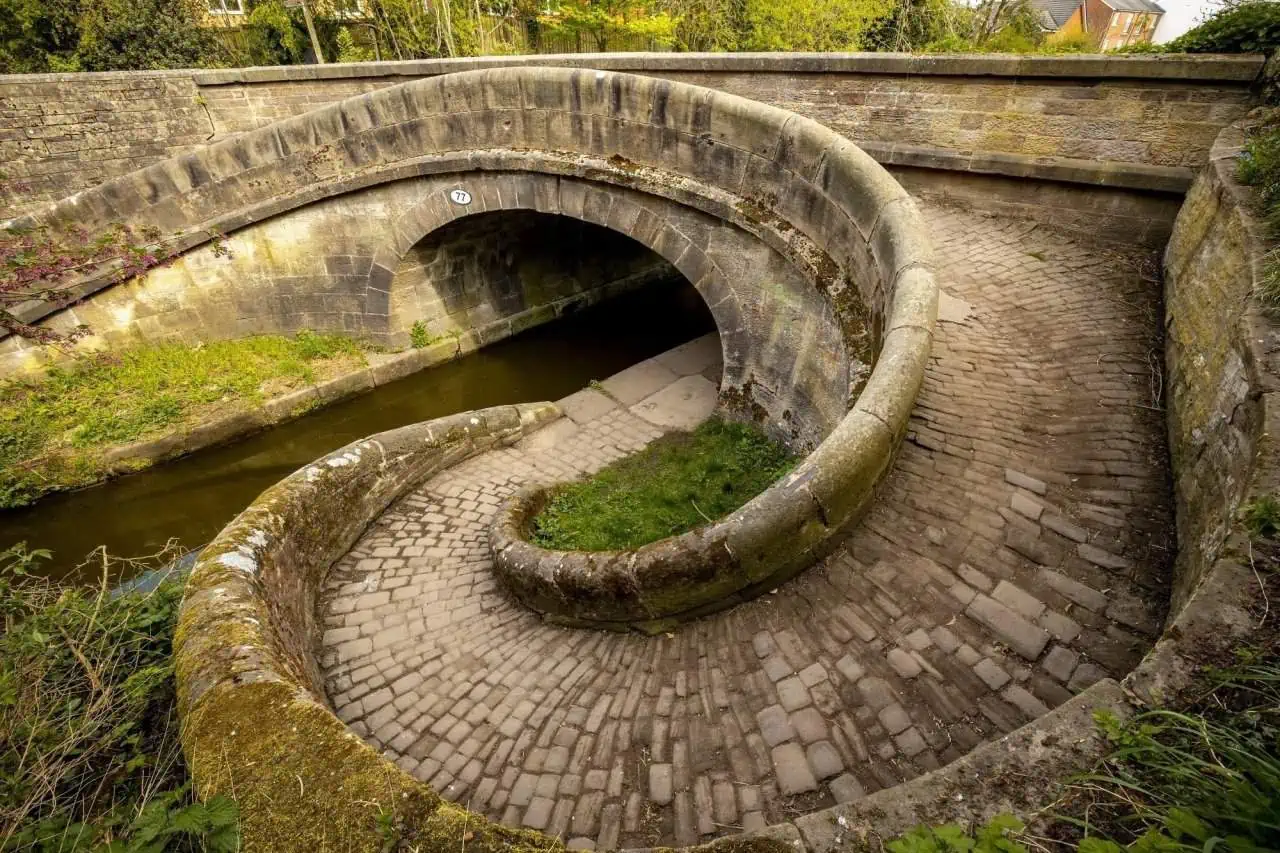
This twisting bridge makes for a quirky crossing over the Macclesfield Canal. The bridge was built in 1831 and is now Grade II-listed. Allows a horse to transfer from one side of the canal to the other side without the harness being unhitched.
The remarkable 'snake bridge', which is classified as grade II listed, was specifically designed to allow horses to cross over without having to untie them from the boat.
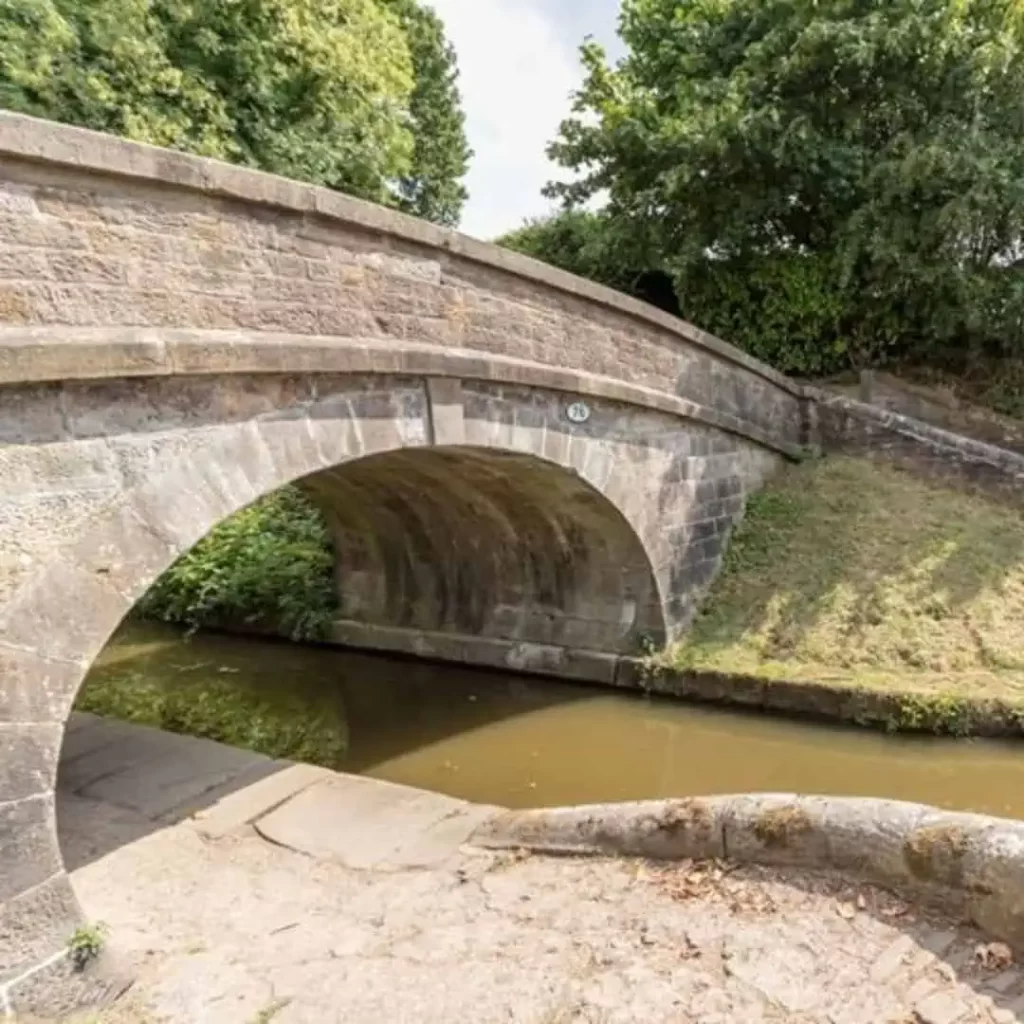 This unique piece of architecture can be found in Macclesfield, along the Macclesfield canal. The canal, which was opened in 1831, features several snake bridges, also known as roving bridges. These bridges enable the towpath to transition from one side of the canal to the other in a loop. They were constructed to facilitate the crossing of horses towing boats without the need to unhitch the tow line.
This unique piece of architecture can be found in Macclesfield, along the Macclesfield canal. The canal, which was opened in 1831, features several snake bridges, also known as roving bridges. These bridges enable the towpath to transition from one side of the canal to the other in a loop. They were constructed to facilitate the crossing of horses towing boats without the need to unhitch the tow line. 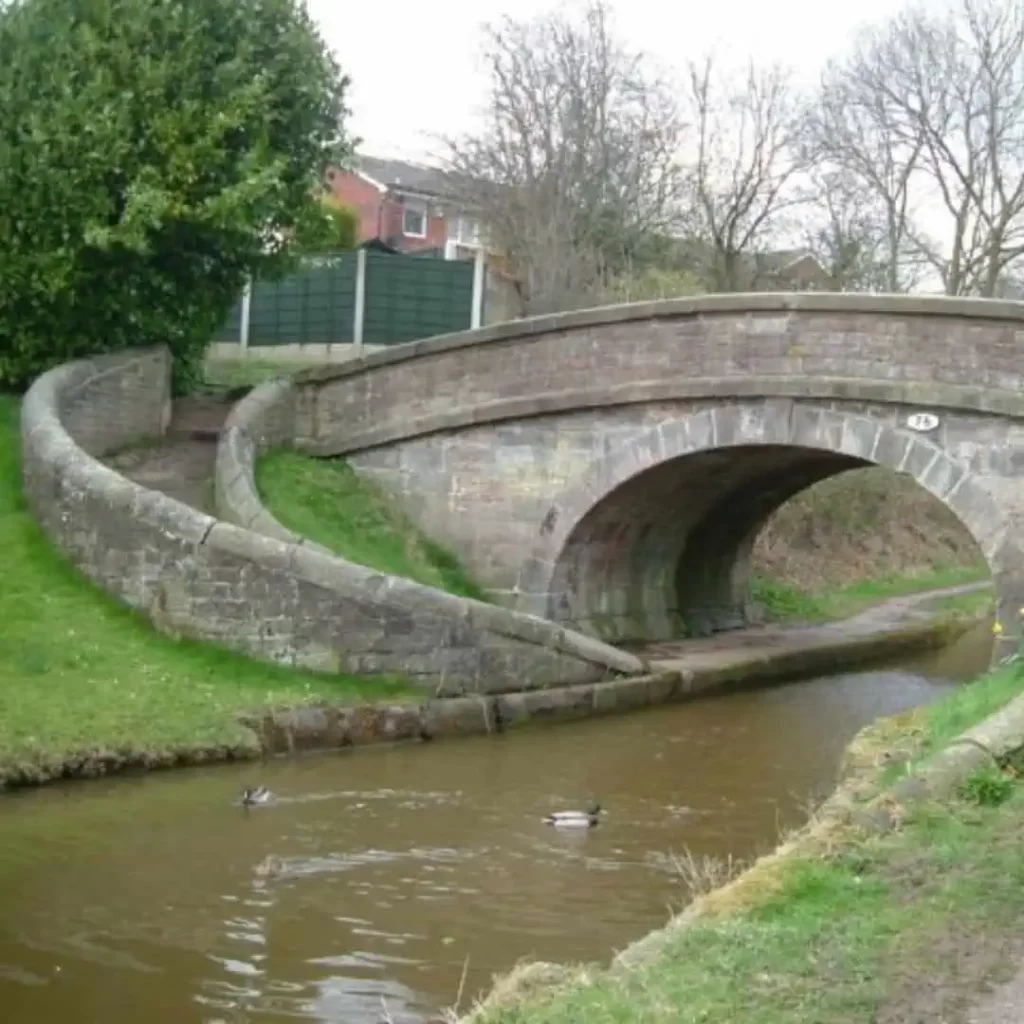
The snake bridge on the Macclesfield Canal utilizes spiral ramps to achieve this feat. On other canals, such as the Stratford-upon-Avon Canal, roving bridges made of iron were constructed in two cantilevered halves, leaving a slot in the middle for the tow rope. These bridges were also referred to as split bridges. In some cases, ordinary Stratford bridges were built in a similar manner due to cost considerations, as they did not require a towpath.
To prevent horses from slipping, the ramps of the bridge are typically studded with alternating rows of protruding bricks. The bridge itself can be made of cast iron or more conventional brick or stone. 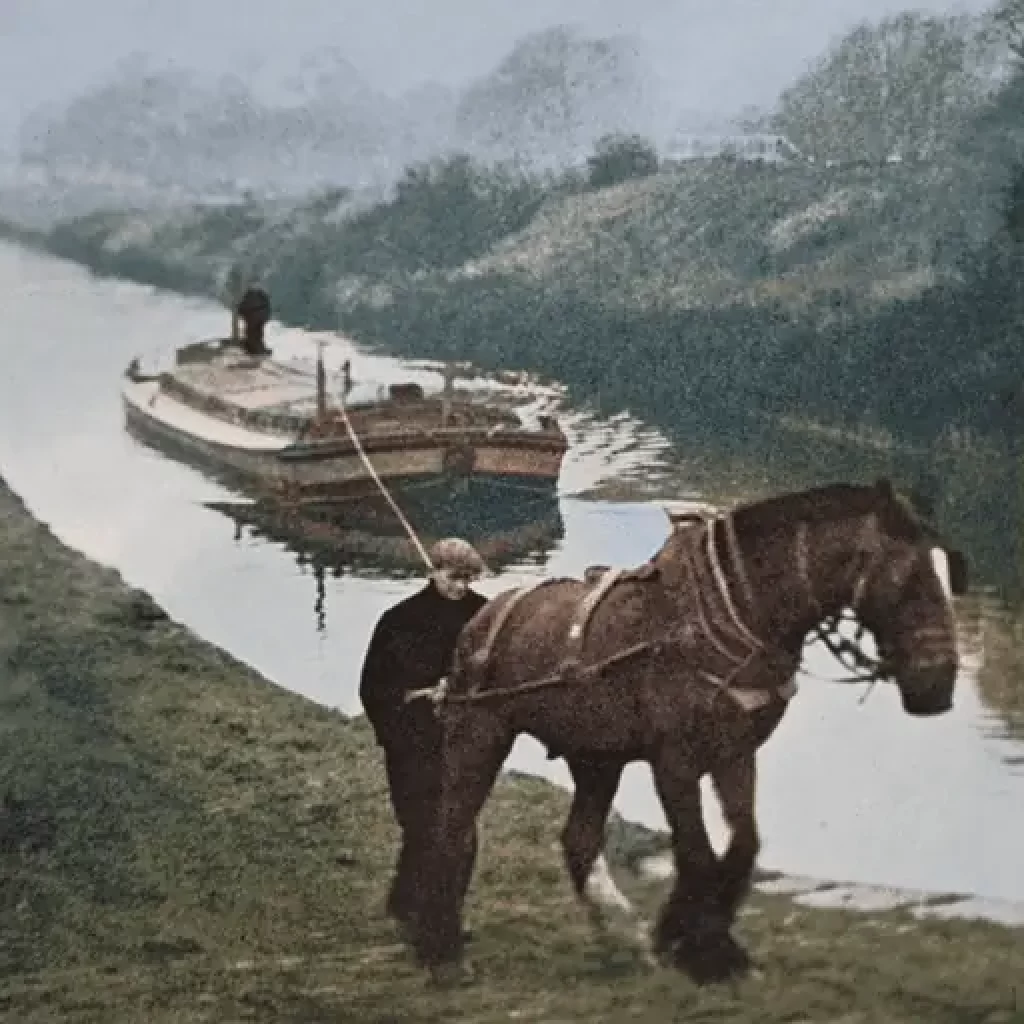
This innovative design minimized the risk of snagging or breaking the rope while crossing the bridge. Horses played a crucial role in British industry for many centuries, plowing fields and pulling various types of vehicles. When it came to towing boats or barges, horses proved to be highly efficient due to minimal energy wastage through friction. This efficiency calculation was instrumental in the development of Britain’s canal system.
What is less known is that horses were also used to haul narrowboats laden with freight. The Romans are known to have used mules for this purpose on their waterways in the UK. Boat horses were essential during the industrial revolution and remained in use until the mid-20th century. A horse towing a boat could transport fifty times more cargo than it could pull in a cart or wagon on roads. Initially, all boats and barges on canals were towed by horses, mules, hinnies, ponies, or sometimes pairs of donkeys.
Many surviving buildings and structures along canals were designed with horse power in mind. Even after the widespread introduction of steam and motor boats, horse-drawn craft continued to operate and compete until the middle of the twentieth century. Today, horse-drawn boats are still used for passenger trips and pleasure traffic on UK canals. 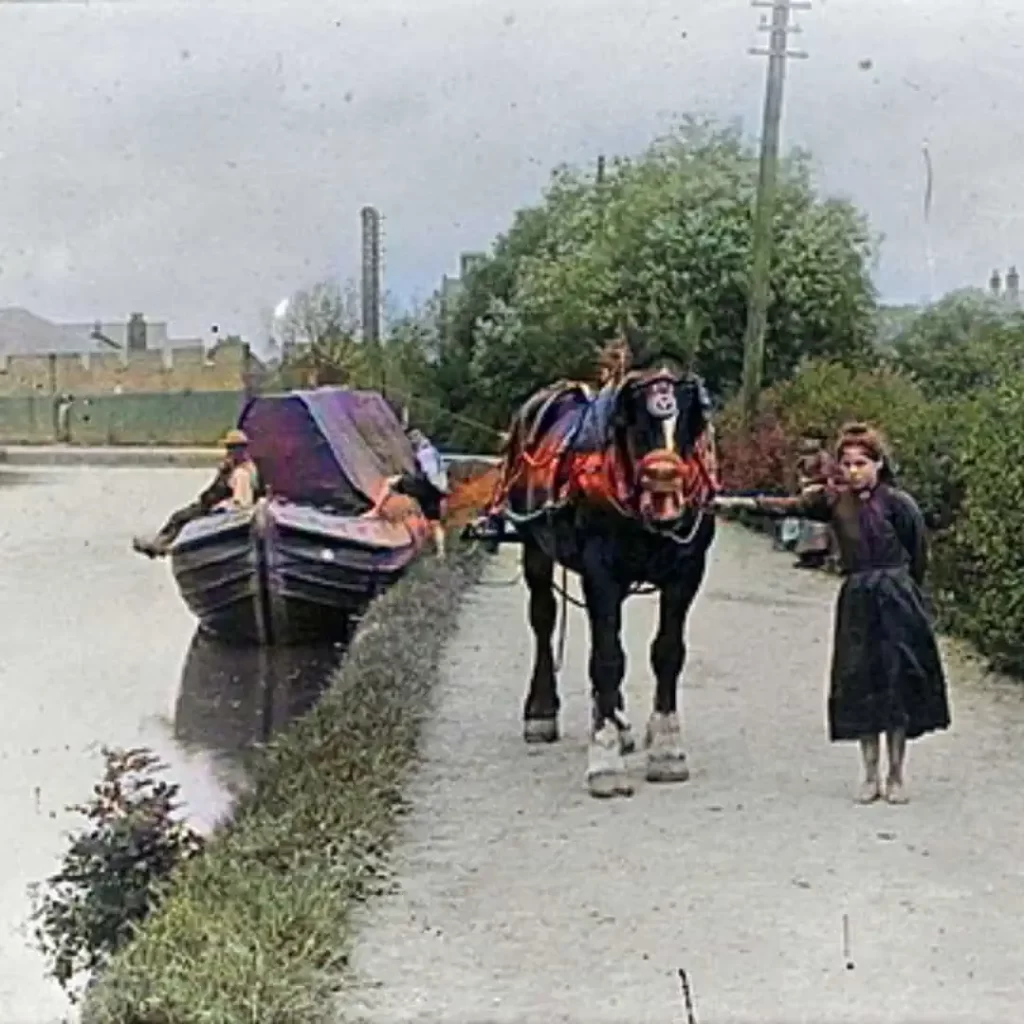
Horseboating, although seemingly slow and romantic, was arduous work that required skilled judgment and experience. It involved long hours of plodding drudgery. As motor boats became available, many boaters eagerly transitioned to them, as engines did not tire and did not require walking behind them all day.
One of Britain’s oldest surviving wooden narrowboats is NB Maria, built in 1854 by Jinks Boatyard in Marple. It was never converted to have an engine. For many years, Maria was led by a horse and used to transport railway track ballast for the Manchester, Sheffield and Lincolnshire Railway. Later, it served as a maintenance boat until 1962 when it was abandoned. In 1972, it was salvaged and converted into a passenger boat in 1978. Maria is currently owned by Ashton Packet Boat Company and is occasionally loaned to the Horseboating Society for events. 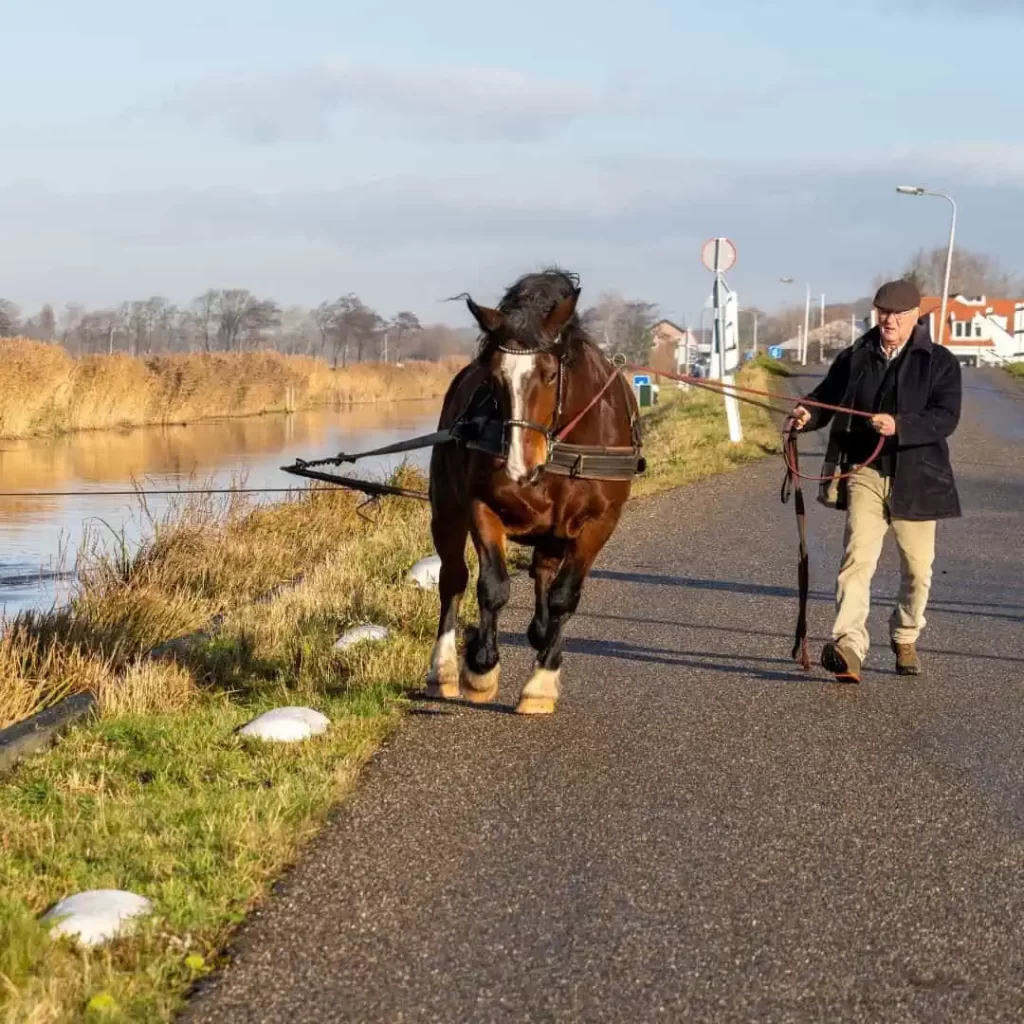
The boatmen who operated horse-drawn boats relied on tools such as forethought, smacking whips, and strapping posts. Forethought involved expert knowledge of the canals and experience in anticipating obstacles such as lock gates or oncoming boats.
Smacking whips were used not to punish the horse but to emit a loud noise resembling a gunshot, serving as a warning of the boat’s approach. Strapping posts made of wood or iron were placed close enough to the canal for boatmen to wrap a strong rope around them. This rope, known as the ‘strap,’ would slow down the boat or allow it to change direction at junctions or sharp bends.


